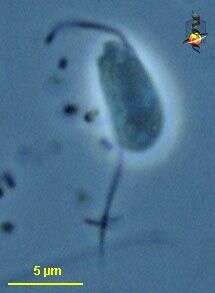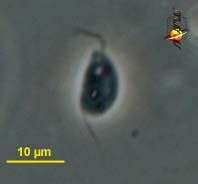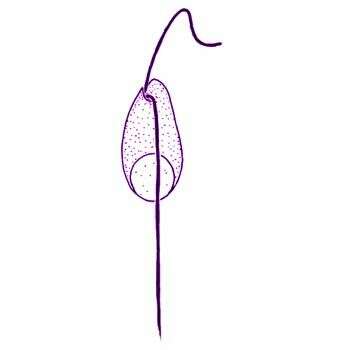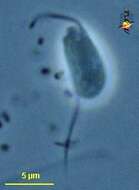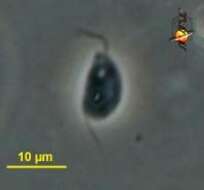-
Ribadelago de Franco, Castille and Leon, Spain
-
Bodo caudatus (beau-dough), bodonids are common and widespread in many habitats. In the olden days (more than 20 years ago) any small heterotrophic flagellate was referred to as a bodonid - such was the state of ignorance. This species glides along the ground, picking up individual bacteria with the mouth - located in the slightly prominent region to the left of the point of flagellar insertion. The anterior flagellum can be seen to insert into a small subapical depression. Phase contrast.
-
Bodo caudatus (beau-dough caw-dat-us), bodonids are common and widespread in many habitats. In the olden days (more than 20 years ago) any small heterotrophic flagellate was referred to as a bodonid - such was the state of ignorance. This species glides along the ground, picking up individual bacteria with the mouth - located in the slightly prominent region to the left of the point of flagellar insertion. Phase contrast
-
Bodo caudatus (Dujardin, 1841) Stein 1878. Bodo cells that are usually ovate, compressed and are 11 - 16 microns long with a conspicuous apical mouth. The cell body is very flexible but not amoeboid. Two flagella emerge from a subapical pocket, the anterior flagellum is about the cell length, is recurved so that it is directed towards the rear and beats with a paddling motion. The acronematic posterior flagellum is 2 - 2.5 times the cell length, emerges from the pocket about 1/6 along cell and appears to attach to the cell body or to lie in a groove when the cells are not moving. The cells move by skidding or swimming using the anterior flagellum. This species is predatory.



